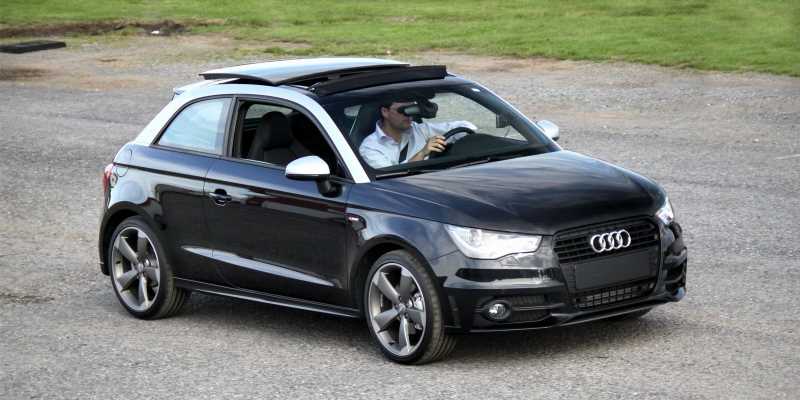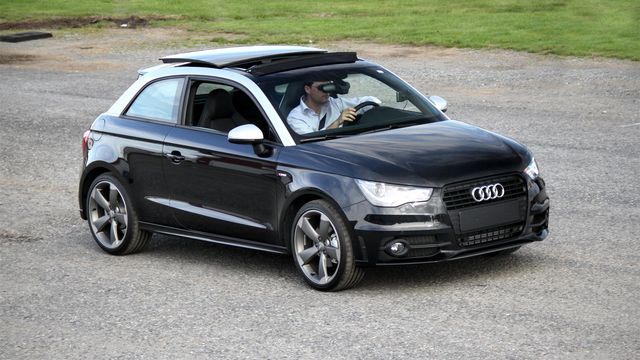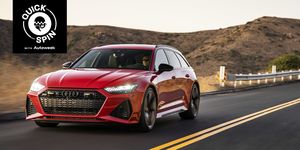German automakers have been notoriously skittish of offering their cheaper and smaller models in the US and Canada, preferring to upsell buyers into larger models with larger engines. We have only ourselves to blame for this, having made the Cadillac Escalade a best-seller, so the list of pocket-sized, diesel-flavored models from Team Germany that you can’t buy here is quite long. And this goes for brands that have offered most of their lineups in the US for decades.
Audi has kept a few of its models away from our shores over the past 30 years. The 1994 A8 flagship stayed out until 1997, while the smaller 80 Avant never made it here at all until the arrival of the new A4 model in 1996. Similarly, Ingolstadt kept the small and funky A2 out of the US—a bubble-shaped Mercedes A-Class competitor—focusing on A4 sedan and wagon sales stateside. Audi also kept the first-gen version of the A3 out of the US.
But after the A2 gracefully exited production, the title role of the smallest Audi fell to the A—a small hatch offered in three- and five-door form starting in 2010. The project itself made judicious use of the Volkswagen Polo platform—another model kept out of the states in favor of Golf sales—stuffing engines as small as the 1.2-liter TFSI under its small hood. The A1 and S1 were a VW Group effort in the fullest sense of the word, with the Skoda Fabia and SEAT Ibiza sharing the spoils along with Ingolstadt’s A1.
Two gas and two diesel engines were on the menu when the A1 debuted a decade ago: a 1.2-liter gasoline inline-four good for 85 hp, or a 1.4-liter four with 122 hp on tap. Fans of diesels could also get two versions of a 1.6-liter TDI with 90 or 105 hp depending on tune, returning 60 mpg. The smallest of the gas engines was paired with a five-speed manual, while the larger even had the seven-speed dual-clutch box as an option. The S1, meanwhile, served up a turbocharged and supercharged 1.4-liter borrowed from the Polo GTI with 180 hp on tap. The hatch had a base price of $19,500 back in the day.
But is the A1 something that you would have liked to see in the US at the time?
The automotive landscape was far more hatch-friendly a decade ago, resulting in the A3 making its way here, just as Mercedes became swamped in CLA-Class sales, just after the C-Class hatchback left the US. Premium-priced hatchbacks were not quite the endangered species they are today, so the A1 could have tried to play in the same niche that the entire range of Minis had to itself stateside, benefitting BMW. The VW Group lacked truly small hatchbacks in the US, having even kept the Polo and Lupo out of North America for years, and had also seemingly surrendered the subcompact segment to Mini, despite once being a seller of small and thrifty cars.
With the W203 C-Class hatch gone, the A1 could have offered city dwellers a compact but still luxurious hatchback positioned below the A3, one that could have also battled the smart ForTwo while that model enjoyed a brief moment of modest sales. As a competitor to the Mini Cooper and the smart ForTwo, the A1 could have offered an experience different from the Golf, focusing on a minimalist but premium interior.
Ultimately, Audi chose not to experiment with models positioned below the A3 stateside, but eventually expanded the A3 range to include a small sedan body style—an unsubtle shot across the bow of the CLA-Class. The A3 never quite enjoyed the success of the CLA-Class, however, despite targeting it fairly squarely. And in all actuality, the window of possible sales success for an A1 was quite brief: As the economy started to recover in 2014, compact premium crossovers surged in popularity, soon to be upstaged by even larger and larger crossovers, prodded on suddenly cheap gasoline.
Needless to say the A1’s time has passed, and such a model would be electric anyway if it was designed from scratch in 2021. But would you have liked to see the A1 here, or was it too poorly suited for the US at the time? Let us know in the comments below.
Source: Read Full Article




